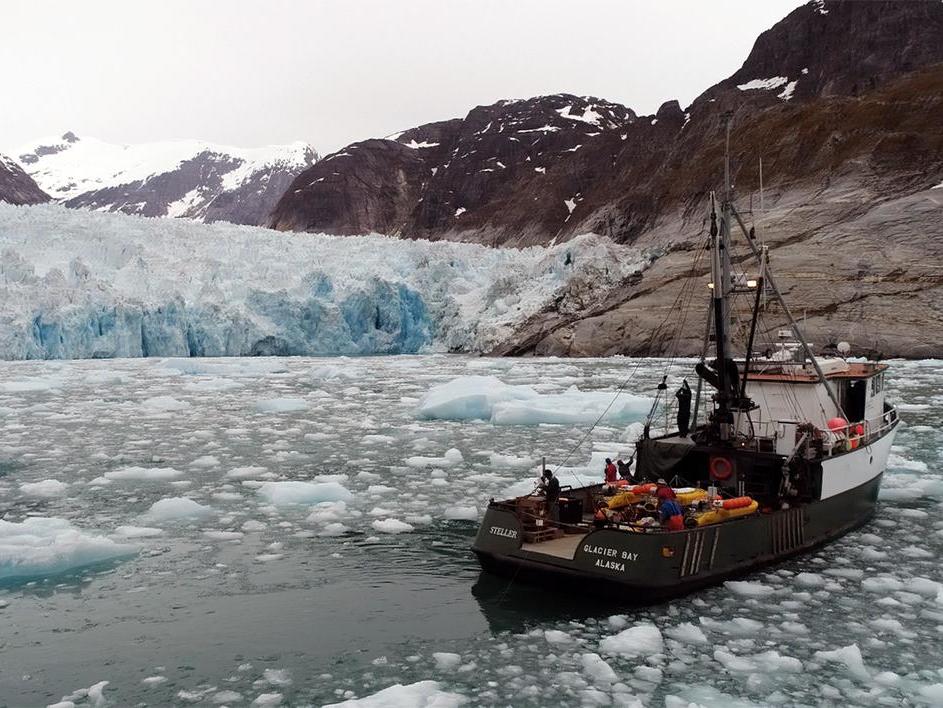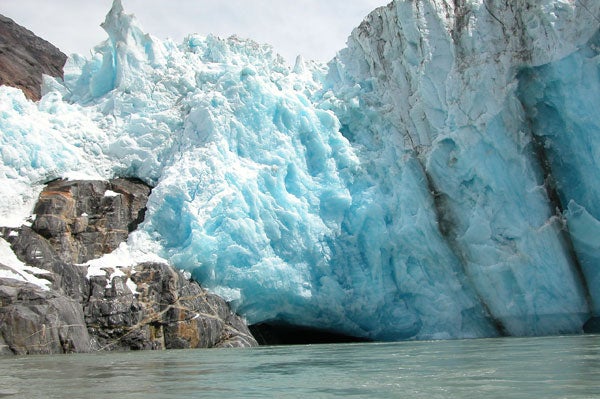Underwater glacial melting up to 100 times faster than thought, study finds
Existing models are ‘wildly inaccurate’ and significantly underestimated extent of melting, scientists say

Underwater glacial melting is happening up to 100 times faster than previously thought, a major study has found.
For the first time, researchers directly measured the melting of tidewater glaciers below the waterline.
They found existing models were “wildly inaccurate”.
Study co-author Rebecca Jackson, of Rutgers University-New Brunswick in the US, said: “We found that melt rates are significantly higher than expected across the whole underwater face of the glacier – in some places 100 times higher than theory would predict.”
Until now, scientists did not know how fast these glaciers – which are found in Greenland, Alaska and Antarctica – were melting under the surface.
Researchers previously used water and air temperature, as well as ocean currents, to measure the melt speed.
But the latest study, published in the journal Science, found that ocean salinity and the shape of the glacier was also important.
“We have opened the door to correcting these models and allowing other researchers to use our method to explore other tidewater glaciers around the world," lead researcher Dr David Sutherland told The Independent.

The oceanographer, from the University of Oregon, added that his team's data “provides a new constraint for improving those models and points to the ocean as an important trigger for ice loss”.
Scientists studied the underwater melting of LeConte Glacier, which flows into LeConte Bay in south Juneau in Alaska between 2016 and 2018.
They used sonar to scan and profile the underwater face of the glacier. They also measured the speed of currents, temperature and salinity of the meltwater flow.
Iceberg calving was detected using time-lapse photography, and weather station data measured surface melt. The team believe their approach could be used to study melting rates at other types of glaciers.
This latest study adds to research that suggests assumptions about underwater melting at glaciers need to be revisited – because of the alarming effects of the phenomenon on rising sea levels.

Dr Sutherland added: “Future sea-level rise is primarily determined by how much ice is stored in these ice sheets. We are focusing on the ocean-ice interfaces because that’s where the extra melt and ice is coming from that controls how fast ice is lost.
“To improve the modelling, we have to know more about where melting occurs and the feedbacks involved.”
Join our commenting forum
Join thought-provoking conversations, follow other Independent readers and see their replies
Comments
Bookmark popover
Removed from bookmarks